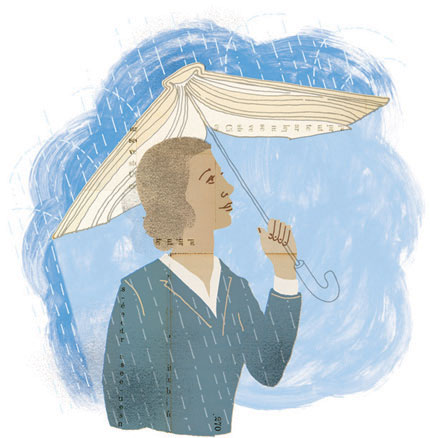academic trend
Master Plan
Students of all ages turn to grad school for refuge, inspiration, and know-how
by Brooke Kosofsky Glassberg / CAS ’04
Char Woods Silberg, a seasoned freelance documentary producer, was wrapping up 2004’s Last Letters Home, a film about American soldiers killed in Iraq, when she first seriously considered a career in public service. “That [film] was a very powerful experience,” Silberg says. So when a colleague told her about an opportunity at Trickle Up, an organization that helps people in developing countries start small businesses, she nearly yelled: “I want to work [there]!” After landing the job, however, she realized that the most fruitful route from media to micro-enterprise development included a return to the classroom for a master’s degree. “It was daunting when I looked at the courses and thought, ‘Oh, boy, can I handle microeconomics?’ ” she says.
Silberg is now halfway through an executive MPA with an international focus at the Robert F. Wagner Graduate School of Public Service. And her self-reinvention is emblematic of a shift occurring across the country, where an unusual confluence of events—economic, technological, personal, and political—has made this an unprecedented period for graduate study. For both recent graduates and longtime professionals, school is a refuge from a brutal job market, where unemployment has reached highs not seen in generations, and companies plan to hire 22 percent fewer new college graduates this year, according to the National Association of Colleges and Employers. These unsteady times have motivated people like Silberg to question what they want to do with their lives, as President Barack Obama’s call to service has also reinvigorated the public sphere.
The changes on campuses are palpable. While NYU’s Graduate School of Arts and Science reflects the national average of a 6 percent uptick in applications, many individual fields—such as public policy, technology, and new media—have recorded double-digit increases. “In economic downturns, we see increases for demand in higher education,” says Robert S. Lapiner, dean of the School of Continuing and Professional Studies. “There’s a rising sense that a master’s is the new bachelor’s degree and interest in specialized graduate study is a growing phenomenon.”
There are no statistics on hiring rates for advanced-degree holders, but their lower unemployment rate implies that they do get jobs more easily, notes Stuart Heiser of the Council of Graduate Schools. This fact is driving new graduates straight back to school. According to an annual survey by the Wasserman Center for Career Development, almost a quarter of 2008 NYU grads are now enrolled in graduate programs. Among the rest, 79 percent plan to go within the next five years. “An advanced degree is intellectual preparation for mobility,” says Catharine R. Stimpson, dean of GSAS. “What’s interesting about the MFA or an MA is that these are pathways to a variety of stages in life’s journey—maybe to a PhD, to a particular job, or to a greater appreciation of yourself and reality.”
Some universities have also noted an “Obama effect,” where the president’s messages of change have turned a spotlight on public service, education, and the environment. At the Steinhardt School of Culture, Education, and Human Development, applications are up 13 percent. But within the school, some programs have been deluged by applicants: The Educational Leadership program jumped by 76 percent, and Environmental Conservation Education is up 126 percent. “With Obama talking about renewable energy and overturning some of Bush’s more noxious rulings, people are jazzed,” says Katharine Davis, an online consumer health editor who entered the latter program this fall.
Deriving personal satisfaction from work is a relatively modern phenomenon, and it steers some to more creative programs. The Gallatin School of Individualized Study (where applications are up 19 percent) and the John W. Draper Interdisciplinary Master’s Program within GSAS, for instance, manifest this desire to tailor a degree to one’s passions. Adam Harvey, a student at the Tisch School of the Arts Interactive Telecommunications Program, left a Web design business to both bone up on technical skills and pursue his art. “Usually those two things conflict, ” says Harvey, whose projects include a paparazzi-deflecting handbag—which sets off a flash when detecting another flash—for those who don’t want to be photographed.
And yet the gates may not open for all. Many universities already have more qualified candidates than spaces and, to protect limited scholarship funding, plan to accept the same number of students as last year, Heiser says. This makes the choice to go back to school harder for adults who may still be paying off college loans, carrying a mortgage, or raising a family. But schools want these types of students. “They have a boatload of other responsibilities, [but] they bring self-discipline and wisdom,” Stimpson says. And they are eager to be more than just aware of market trends. She says: “You know how to Twitter, but do you know how to build Twitter?”
illustration by leigh wells







